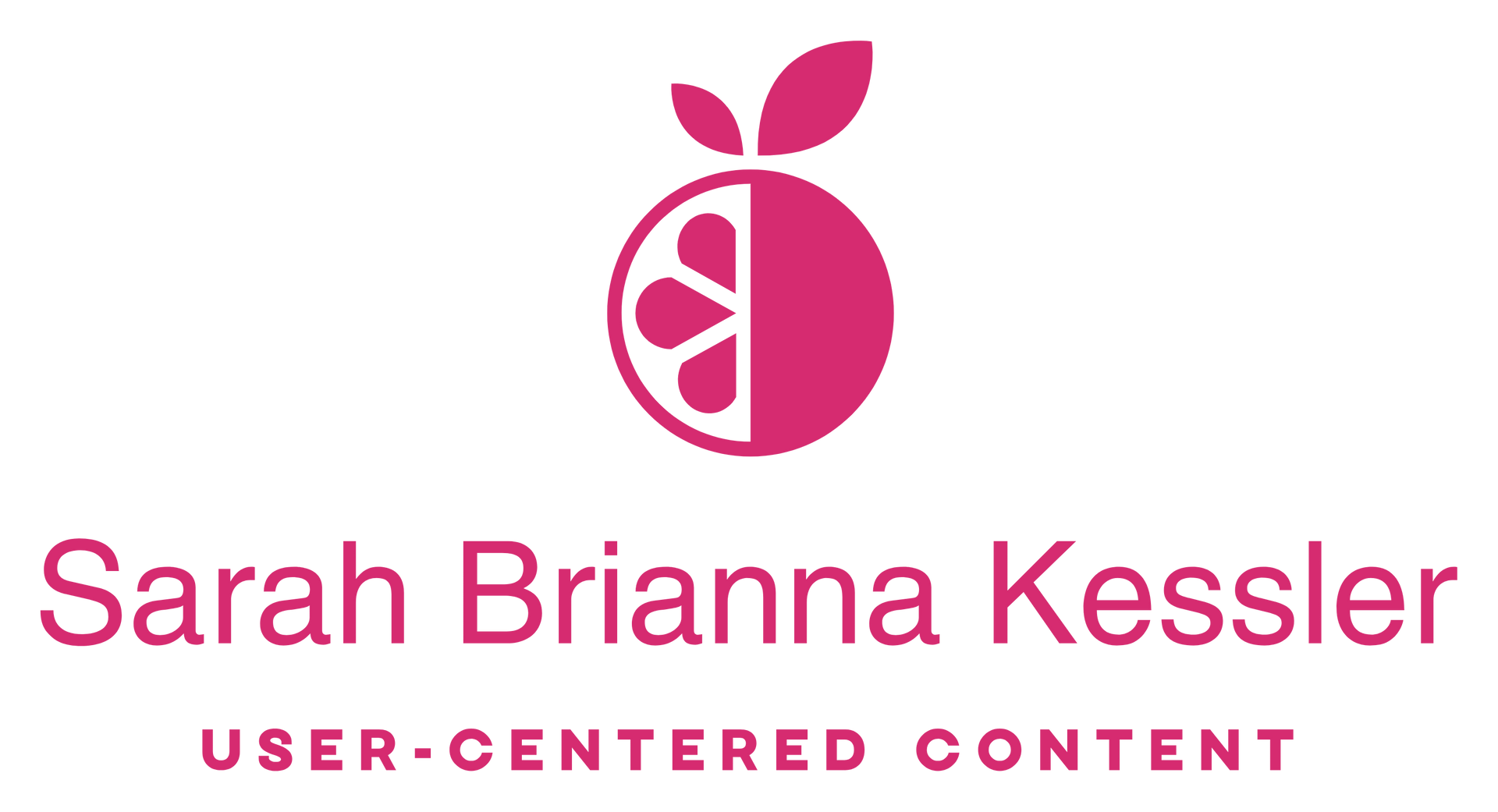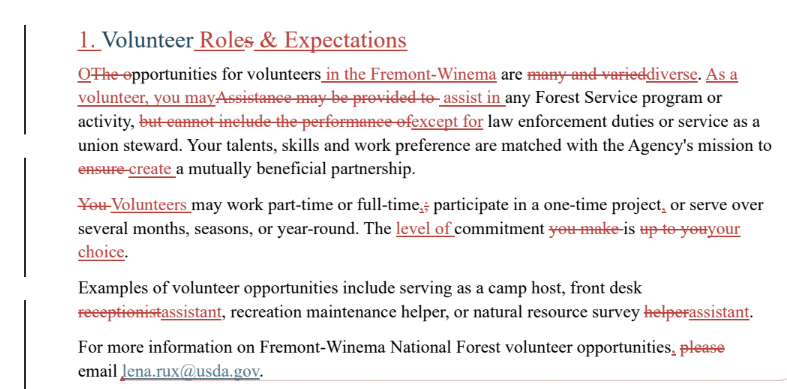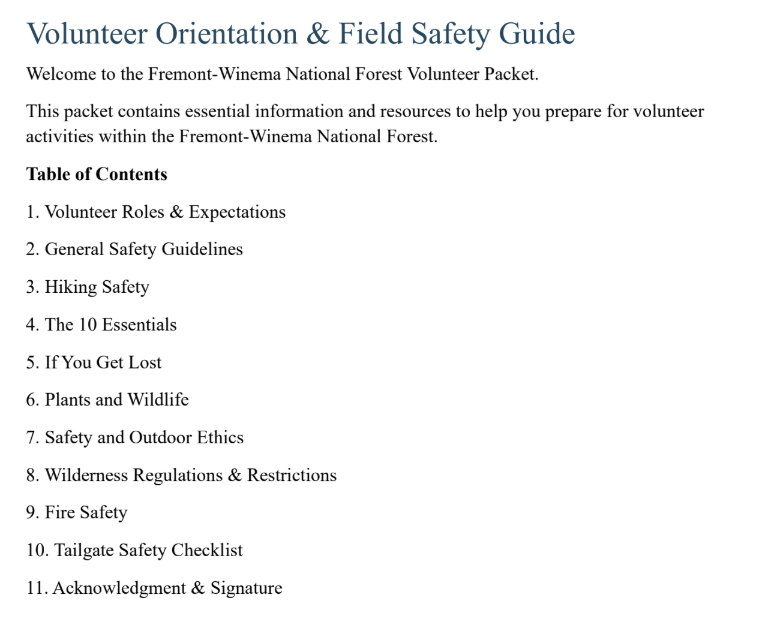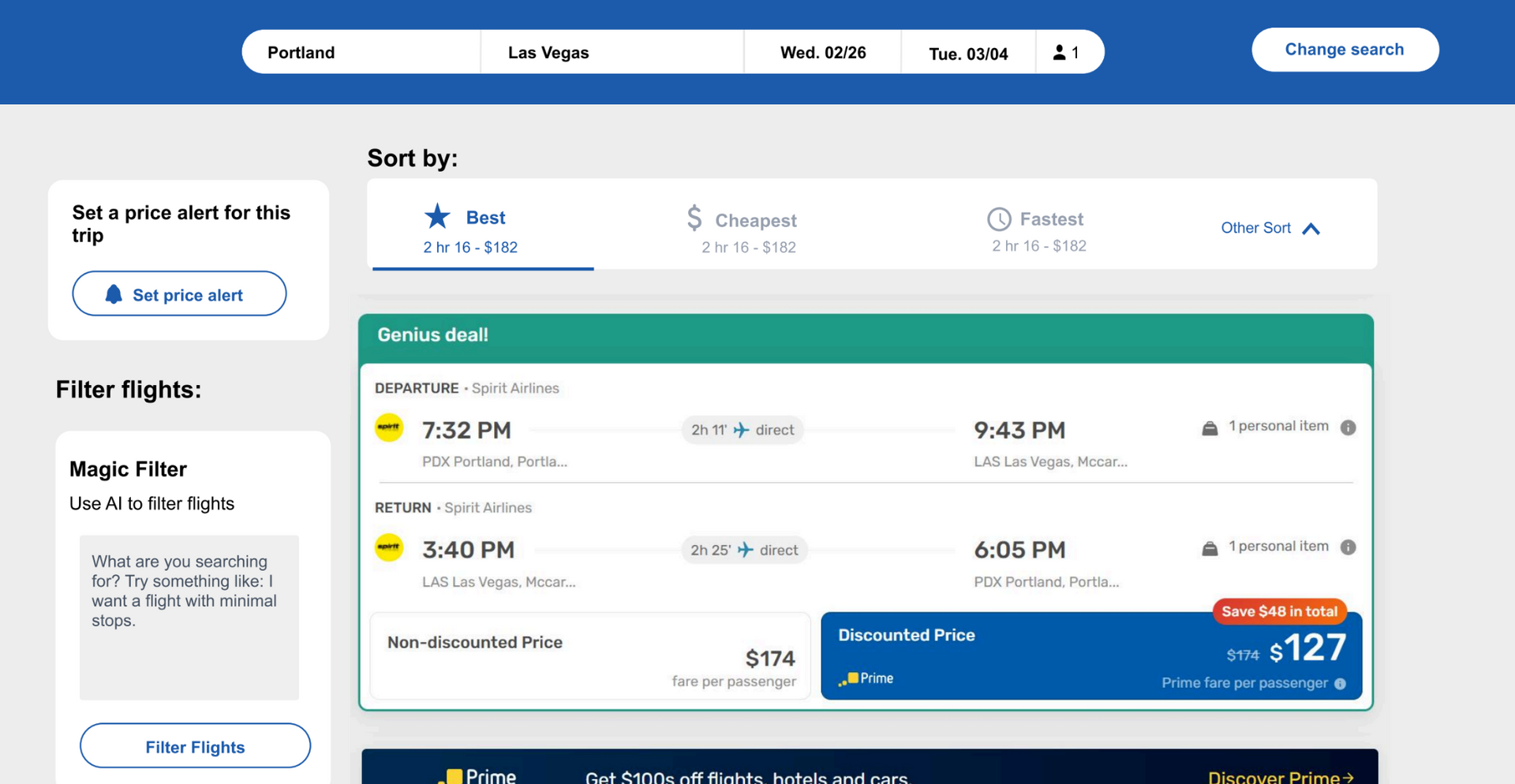Volunteer Packet
National Park Service
Skills & Competencies
Substantive and Structural Editing
Content Synthesis
Technical Writing and Documentation
Plain Language and Accessibility
Information Design and Hierarchy
Research and Verification
Project Management and Organization
About This Project
This project involved creating a complete volunteer orientation and safety packet for the Fremont-Winema National Forest.
I consolidated information from multiple U.S. Forest Service resources and public safety documents into a single, cohesive guide.
The goal was to improve usability, ensure consistency, and present essential procedures in a format accessible to new volunteers and field staff.

Context & Purpose
This project addressed the need for a unified, easy-to-navigate volunteer packet for the Fremont-Winema National Forest.
Existing materials were spread across various websites and policy documents, creating confusion for new volunteers and staff.
The project combined technical editing, content organization, and usability design to produce a single, accessible resource.
Purpose:
- Consolidate safety, orientation, and procedural content from multiple sources.
- Edit and rewrite technical information for clarity and readability.
- Apply visual hierarchy and structured formatting for quick reference.
- Ensure consistency with U.S. Forest Service communication standards.
Process & Methods
The project required gathering, evaluating, and reformatting technical content from multiple government and safety sources. I worked with a client contact from the Fremont-Winema National Forest to confirm scope, priorities, and accuracy, then developed a document structure that balanced detail with usability.
Steps:
- Collected volunteer orientation and safety materials from U.S. Forest Service and partner websites.
- Evaluated overlapping and outdated content to determine what should be retained, revised, or removed.
- Reorganized material into logical sections for onboarding, safety, and field procedures.
- Applied plain language editing to improve clarity and consistency across all sections.
- Formatted the packet for digital and print readability, with visual cues for key safety information.
Findings
The consolidation process revealed several challenges common in government and technical communication—most notably, fragmented information and inconsistent formatting across sources.
By integrating the content into one cohesive guide, the packet achieved better clarity, consistency, and user accessibility.
Key Findings:
- Fragmented materials: Important safety details were dispersed across multiple websites and PDFs, making orientation inefficient.
- Inconsistent terminology: Variations in tone and policy phrasing reduced credibility and created confusion.
- Poor readability: Dense text and mixed formatting limited quick reference in field conditions.
- Lack of visual hierarchy: Key warnings and procedures were buried within paragraphs rather than highlighted for visibility.

Recommendations
The completed packet established a foundation for clear, consistent communication across volunteer materials. Future updates should continue prioritizing accessibility, maintenance, and alignment with agency standards.
01
Maintain a Centralized Resource
Keep all volunteer materials stored and updated in a single location to prevent future information gaps or version conflicts.
02
Continue Plain Language Review
Review new sections using plain language principles to ensure future additions remain accessible to diverse audiences.
03
Apply Consistent Formatting Across Updates
Use the established visual hierarchy—tables, bullet lists, and callouts—to maintain clarity as new procedures are added.
04
Implement a Review Cycle
Establish a yearly content review schedule to verify that safety guidelines and contact information remain accurate.
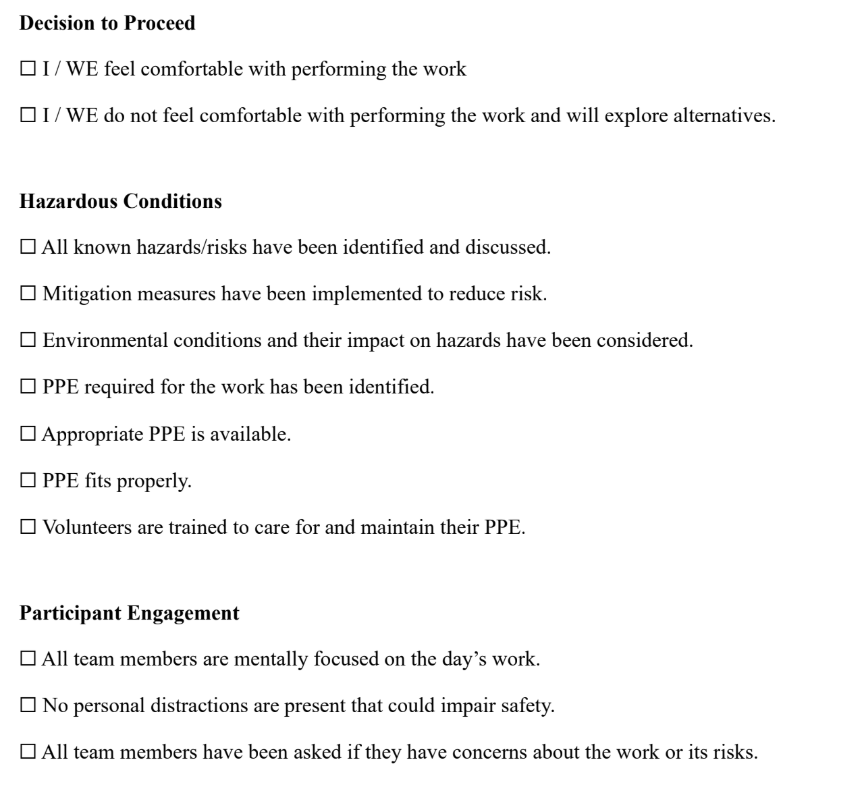
Reflection
This project highlighted the value of structure and synthesis in technical communication.
Building the packet from multiple sources required balancing accuracy, usability, and tone to serve a wide range of readers—from office staff to field volunteers.
The result was a cohesive, accessible resource that supports safety, clarity, and consistency across the organization.
